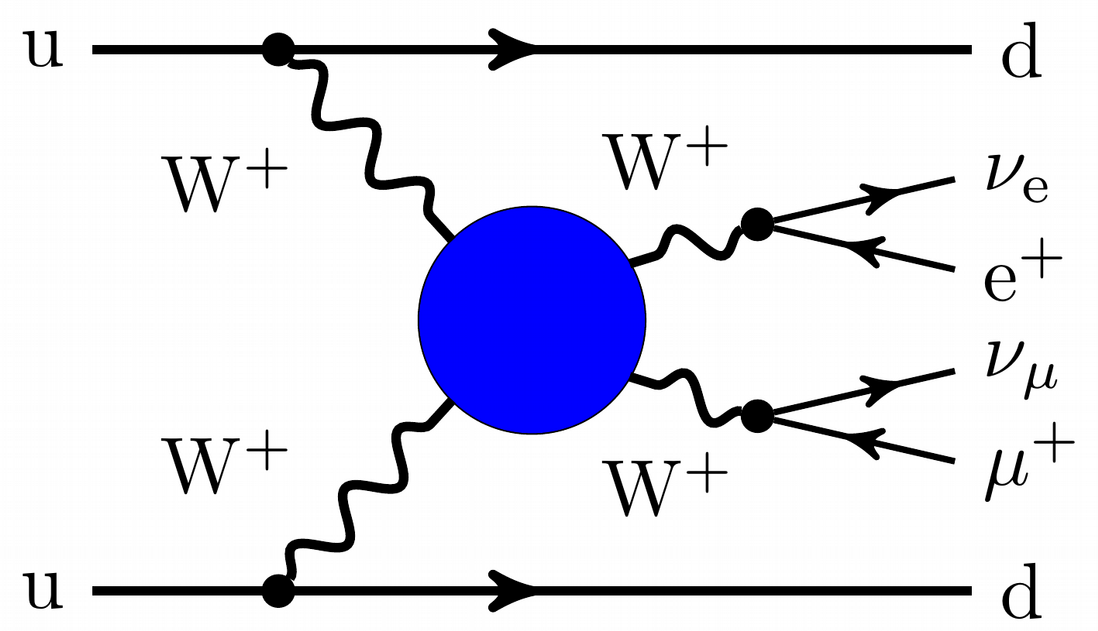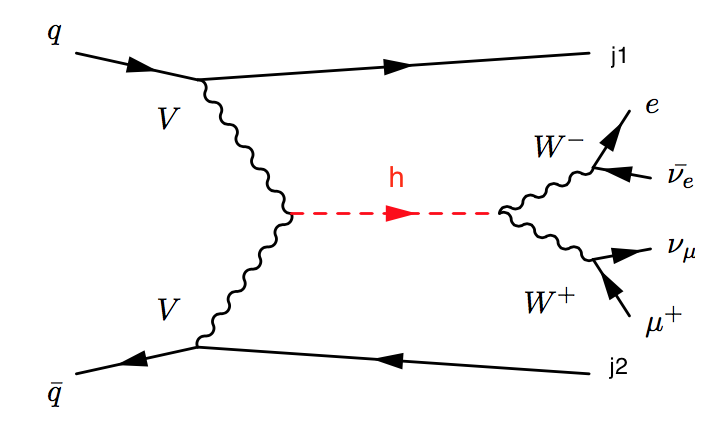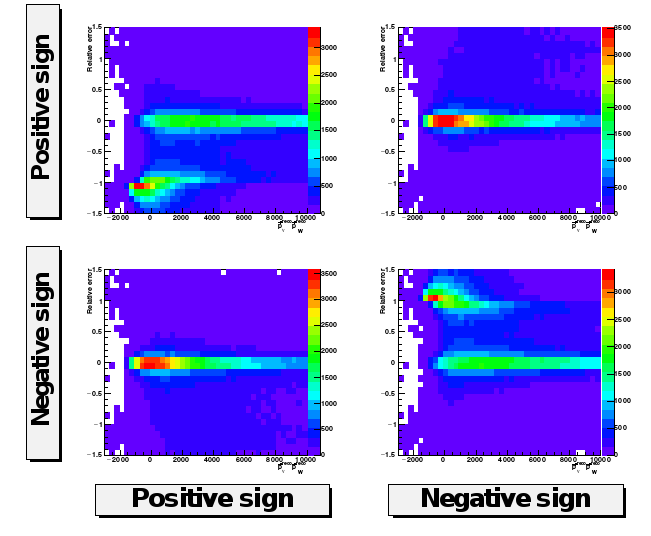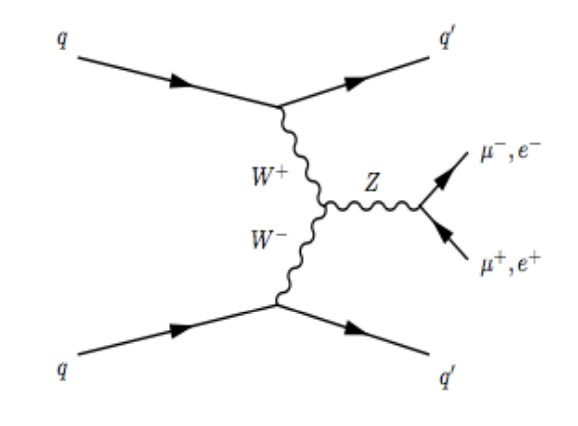December 2017 - Study of WZ VBS processes
How probably is it that the observed events stem indeed from the process that we are interested in?
Can we increase the ratio of signal (what we are interested in) to the background (what we are not interested in)?
These were the questions, Despoina Sampsonidou from Aristotle University of Thessaloniki tackled together with scientists at the Technical University TU Dresden, visiting the Institute IKTP from November 19th to December 14th 2017.
Together they concentrated on the study of the W±Z production via Vector Boson Scattering (VBS) in the ATLAS experiment.
ATLAS is one of the four major experiments at the Large Hadron Collider (LHC) at CERN.
It is a general-purpose particle physics experiment run by an international collaboration and, together with CMS, is designed to exploit the full discovery potential and the huge range of physics opportunities that the LHC provides.
The VBS production is a rare but at the same time a very important set of processes that it will be possible to measure at LHC.
It manifests itself as two high-energetic, well-separated jets in the detector, produced together with two vector bosons (dibosons).
So in the final state of the event, apart from the the two jets, the decay products of the two vector bosons are present and can be used to select the signal events instead of uninteresting background.
The study of such states may provide evidence for the existence of New Physics, which will manifest itself at energies higher than the ones available in the LHC collisions currently.
The 13 TeV center-of-mass energy, as well as the high luminosity in Run2 at LHC, which will continue for one more year, significantly enhances the sensitivity of these processes.
Thus, it allows us to test the predictions of the Standard Model to a high precision and consequently look for deviation from it.
Despoina’s visit allowed a close collaboration with the TU Dresden team in a time period crucial for the next publication.
The results of the work performed during the STSM were presented in the TU Dresden group meeting.

 VBSCan COST Network
VBSCan COST Network




